Vertical racking by Next2Sun: In order to install bifacial solar modules vertically, thicker metal posts are sunk into the ground, with framing that holds the modules above ground. This racking scheme is meant to be installed in between rows of crops, or as a fencing structure. The company claims bifacial modules make the production values acceptable, and in places with a high albedo (or during snow events), production becomes respectable.
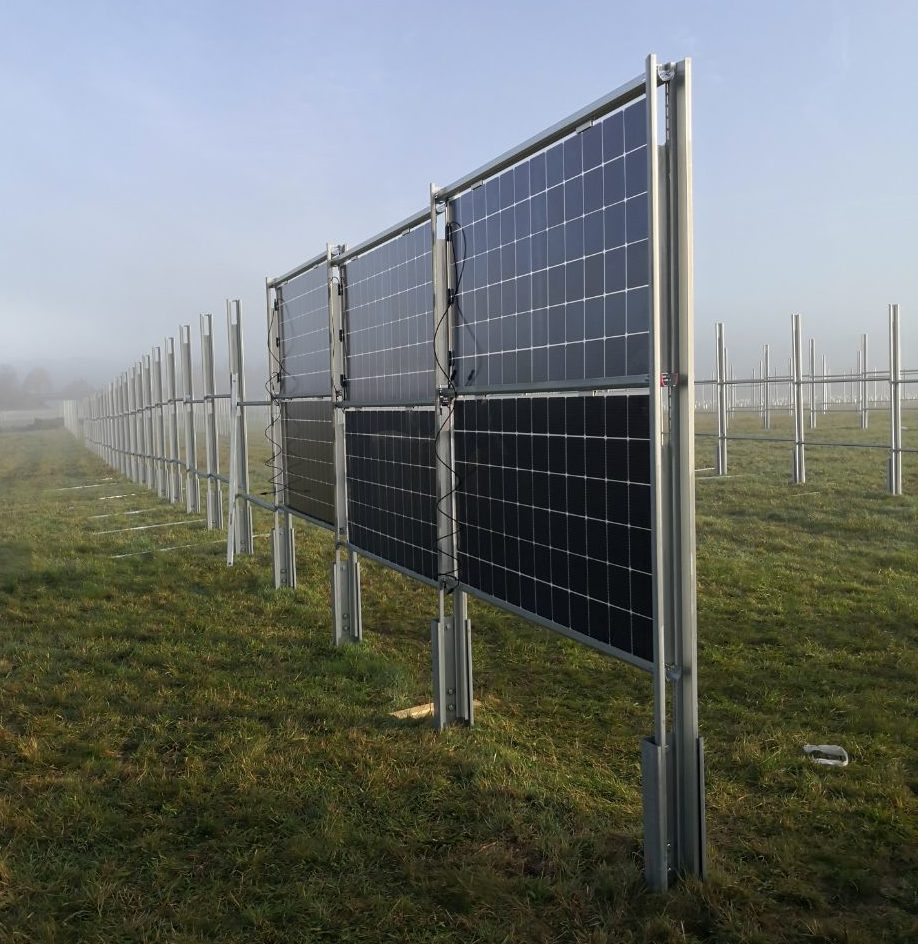
A new type of floating solar: Sun Rise E&T Corporation brought these flexible HDPE (high-density polyethylene) pipes from its fish farm experience into the floating solar industry.
The modules are deployed in sub-sections of two rows of eight to allow for flexibility. The tubes can be deployed on land once they are filled up with water or sand.
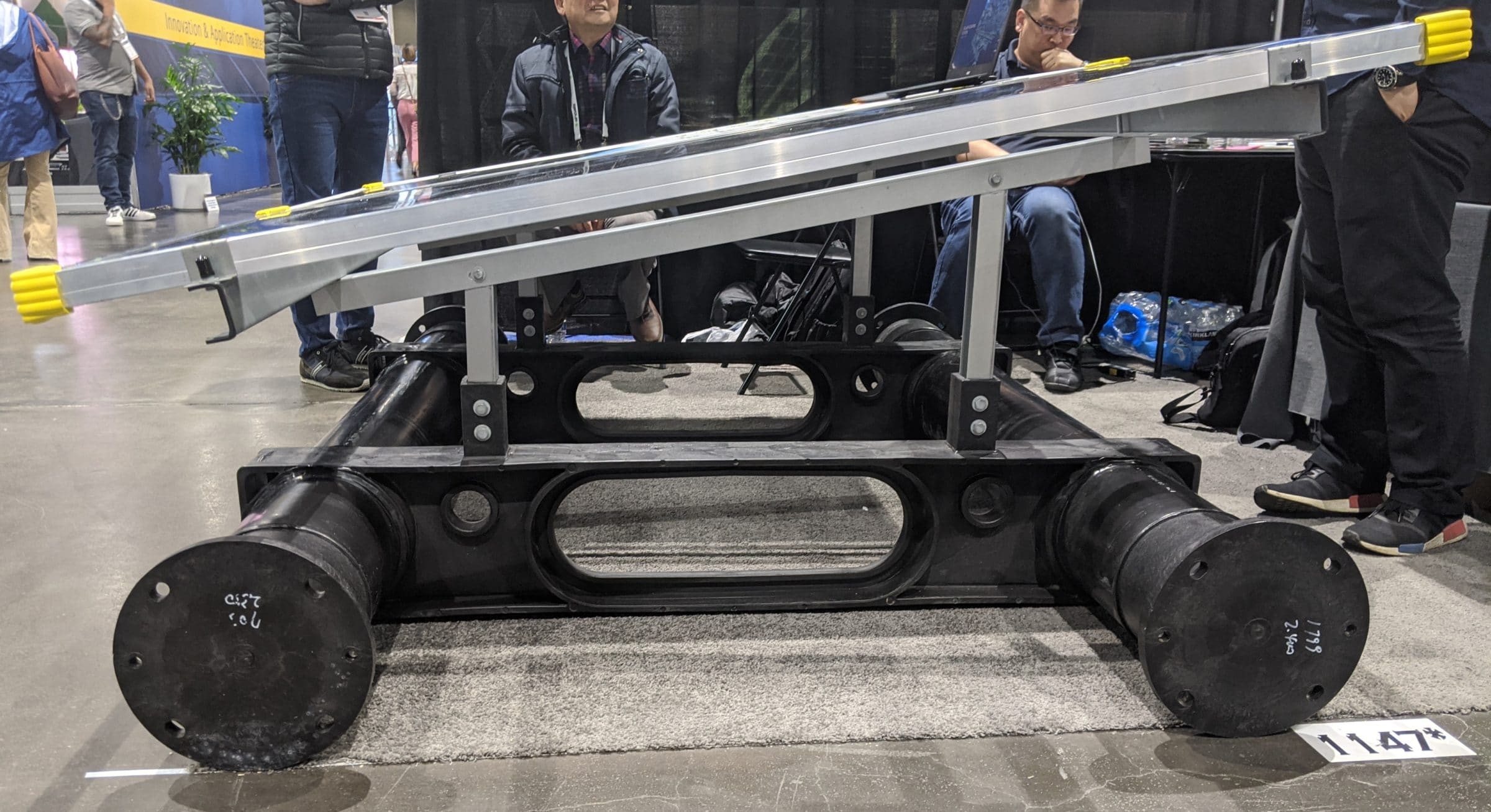
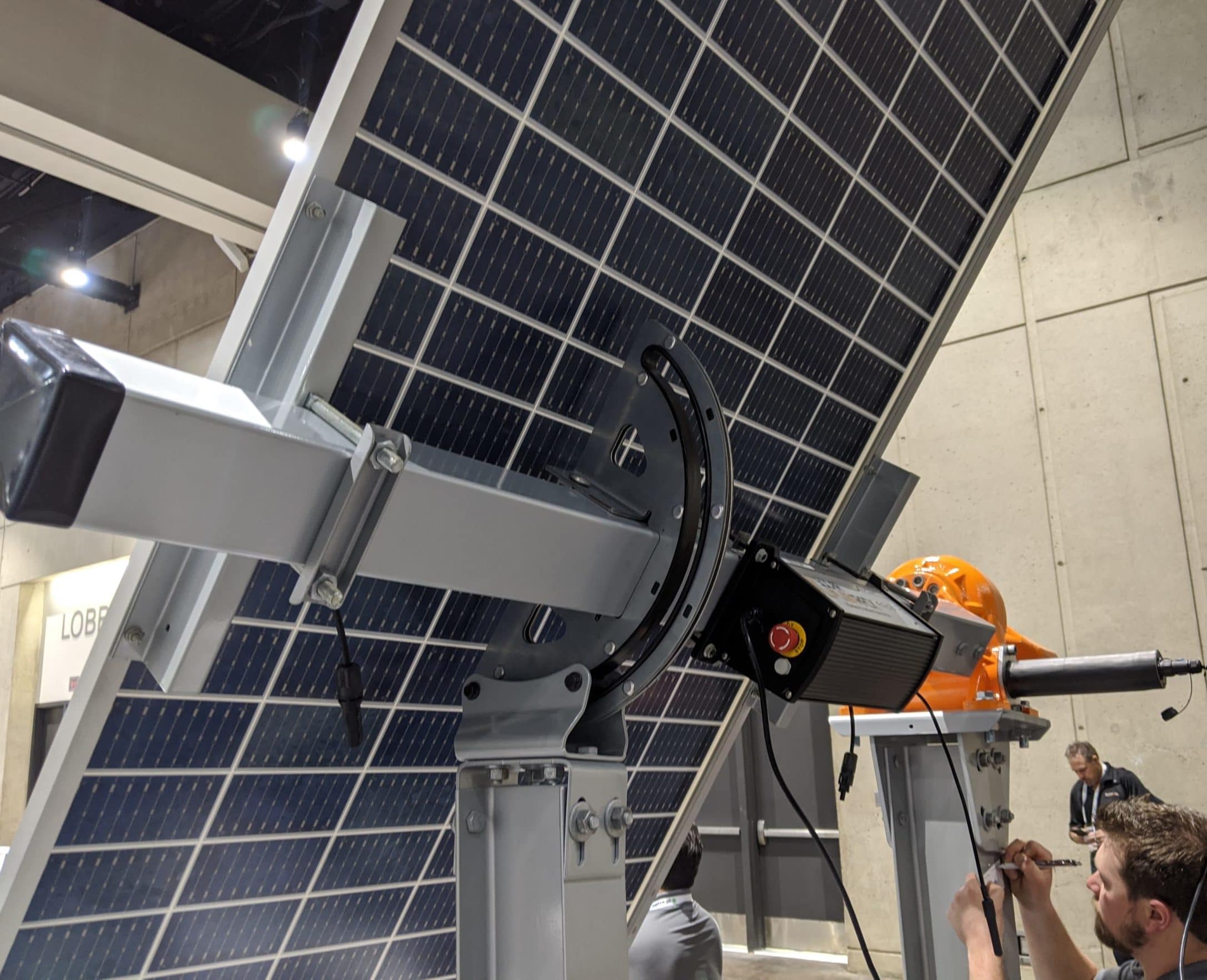
Iron Ridge’s BX Ballasted System: The black glass-reinforced composite chassis holds the ballast and is where the solar modules actually connect to the system. The heavy steel bar that crosses the individual chassis provides greater system stability in higher wind regions. In the center of the chassis is a place for a lag bolt, if additional tie downs are needed. The hardware comes in 5 and 10 degree tilts. The large wide flat bottom of the chassis spreads the weight compared to thin metal frames pushing into your roofing product.
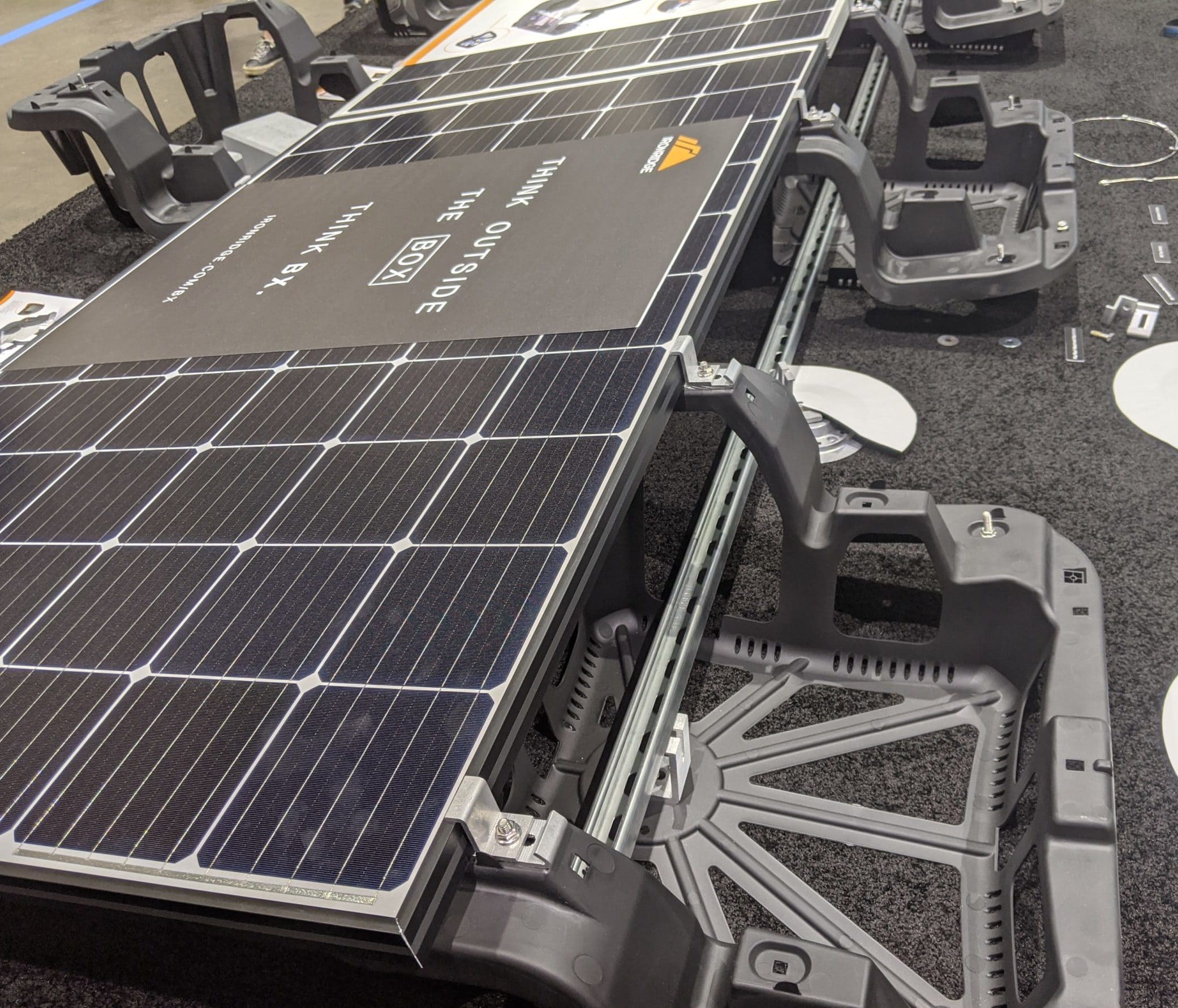
Neat little product by Quickbolt – microflashing. The lower left image replaces the large square aluminum flashing that most are used to installing. Notice in the center image cross section where the lag bolt is driven through the L-foot, into a piece of wood, and that the thin plastic piece in between – the microflashing itself – is compressed downward by the custom lag bolt. That pinch from the bolt creates the seal that keeps water from leaking. The gentlemen at the booth suggested a squeeze of silicon between the l-foot and the flashing. And then on the right, you see a nice clean – and smaller – finished product.
For a long time, I was scared of quoting corrugated metal roofs. I had no experience with it, and thought that only metal seam roofs were viable products to connect. This fear is no longer with me though, as multiple products now meet the needs. Below is Solar Connections’ corrugated Powermount product. Add caulking around the base, stainless steel fasteners are pushed into the metal, and in the case of the unit in the back on the left below – its strong enough to offer a railless installation solution.
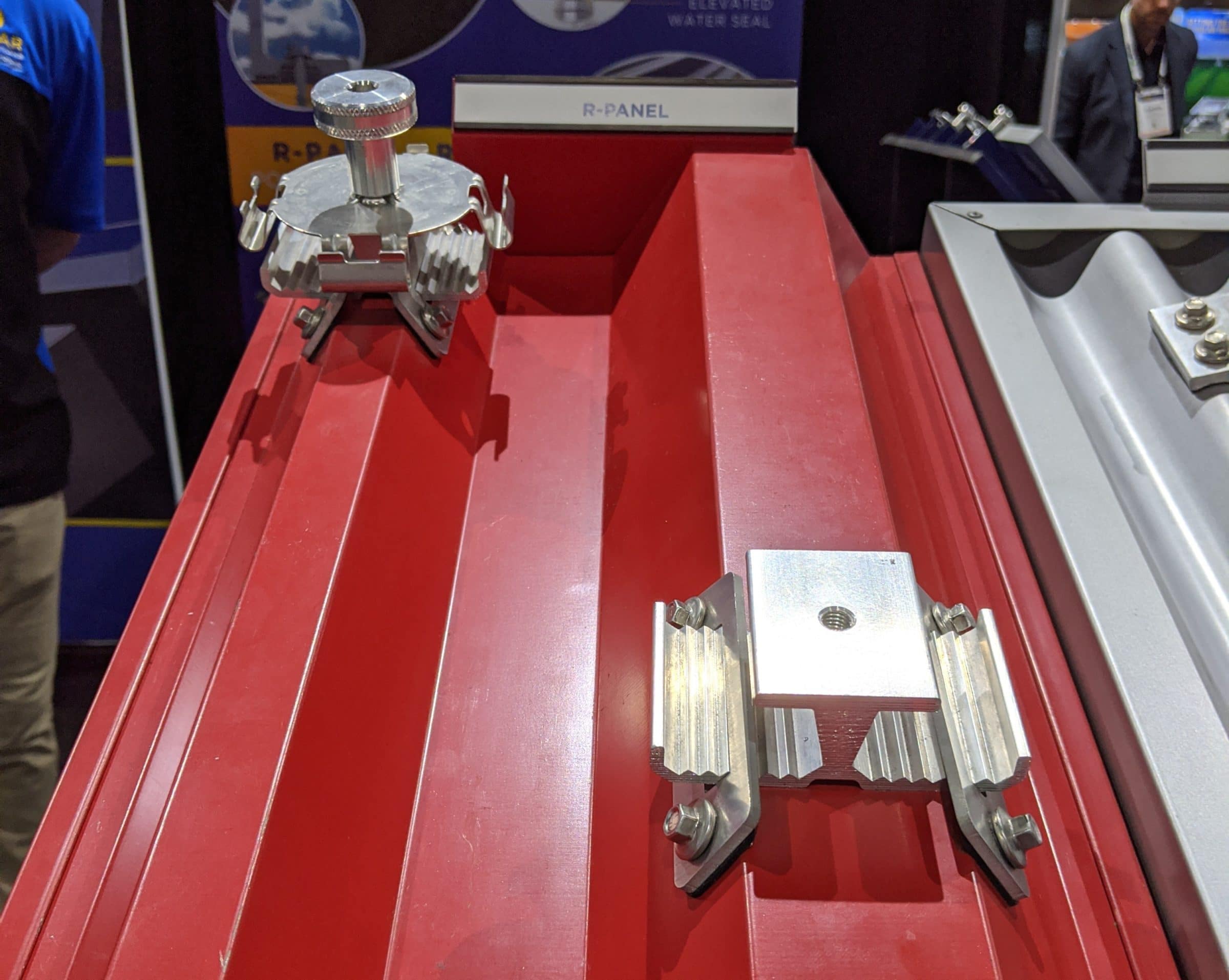
Pegasus Solar had a booth demo that showed the water flow around its rooftop racking gear. This isn’t special compared to any other solar roofing products, but it’s a good reminder of what we’ve got to deal with on a roof — decades of flowing water that will go wherever gravity lets it go.
This content is protected by copyright and may not be reused. If you want to cooperate with us and would like to reuse some of our content, please contact: editors@pv-magazine.com.
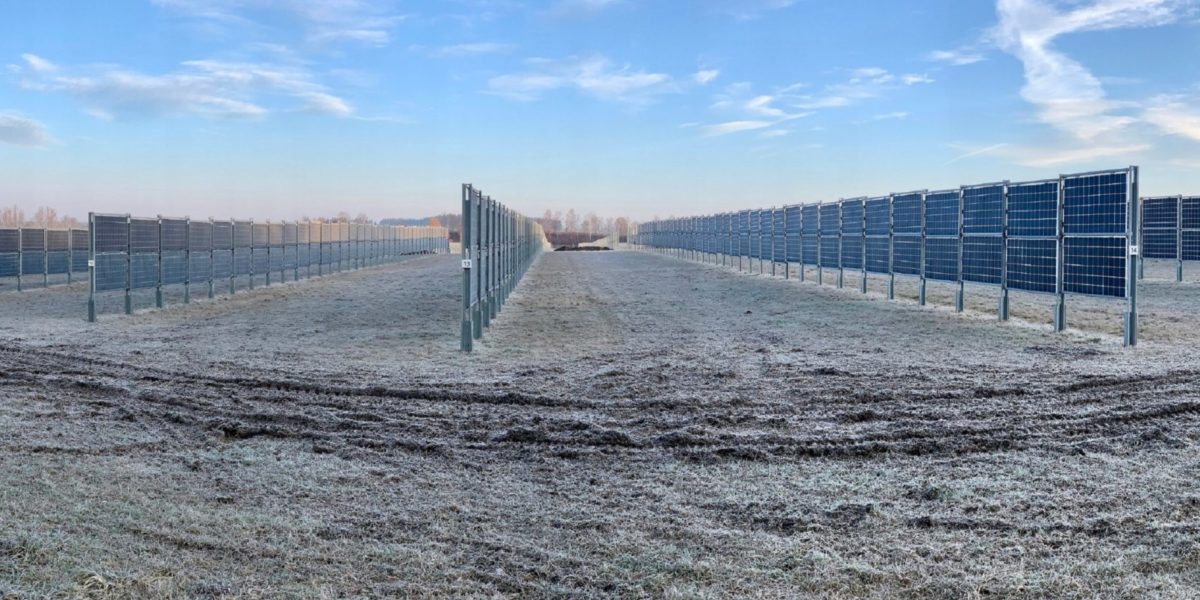










By submitting this form you agree to pv magazine using your data for the purposes of publishing your comment.
Your personal data will only be disclosed or otherwise transmitted to third parties for the purposes of spam filtering or if this is necessary for technical maintenance of the website. Any other transfer to third parties will not take place unless this is justified on the basis of applicable data protection regulations or if pv magazine is legally obliged to do so.
You may revoke this consent at any time with effect for the future, in which case your personal data will be deleted immediately. Otherwise, your data will be deleted if pv magazine has processed your request or the purpose of data storage is fulfilled.
Further information on data privacy can be found in our Data Protection Policy.